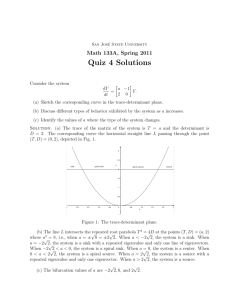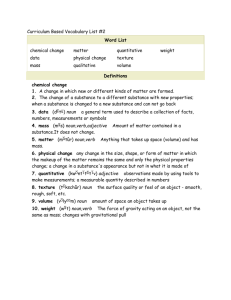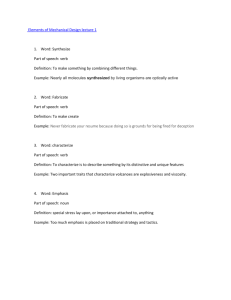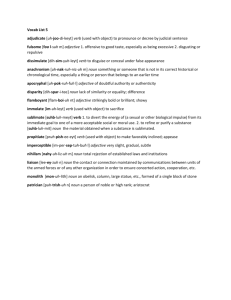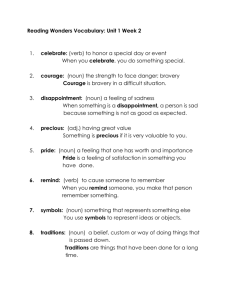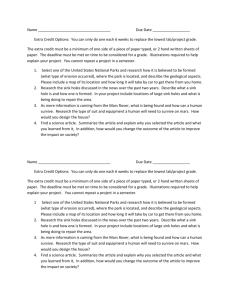Using online translators CORRECTLY to avoid PLAGIARISM and
advertisement
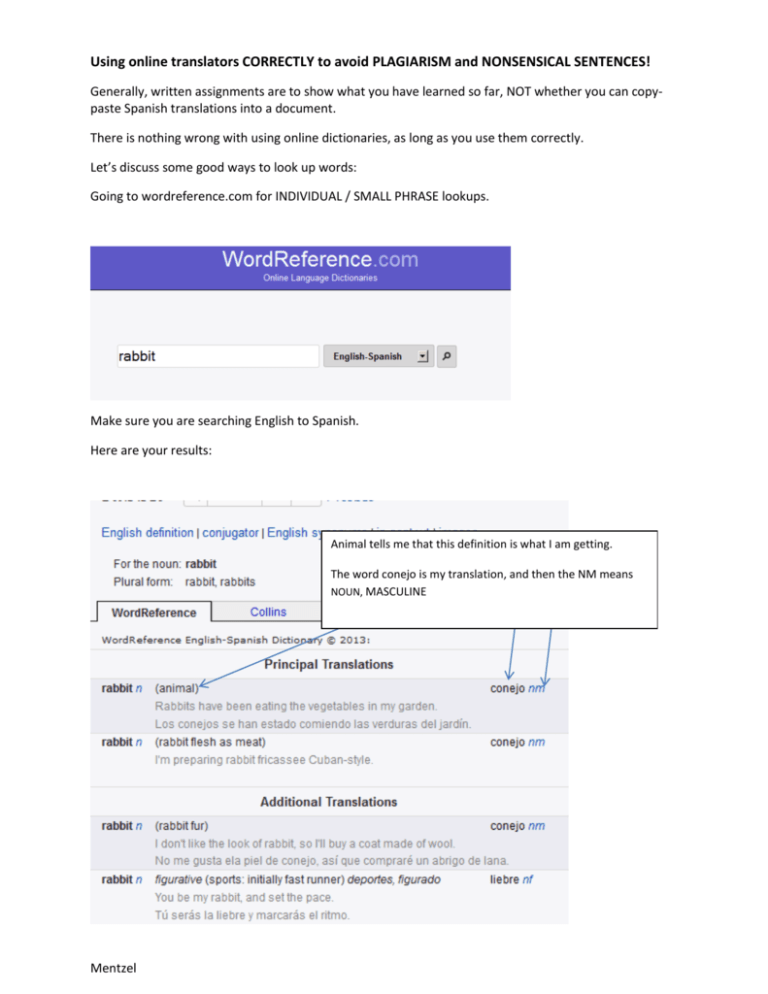
Using online translators CORRECTLY to avoid PLAGIARISM and NONSENSICAL SENTENCES! Generally, written assignments are to show what you have learned so far, NOT whether you can copypaste Spanish translations into a document. There is nothing wrong with using online dictionaries, as long as you use them correctly. Let’s discuss some good ways to look up words: Going to wordreference.com for INDIVIDUAL / SMALL PHRASE lookups. Make sure you are searching English to Spanish. Here are your results: Animal tells me that this definition is what I am getting. The word conejo is my translation, and then the NM means NOUN, MASCULINE Mentzel Seems easy enough. But what about if I want to look up a word that could also be a verb? Here’s an example. Sink = where you wash hands, also what the Titanic did in the ocean. Here is the problem with Google translate: Hundirse = to sink in the water like a boat. Not quite what you were looking for. Let’s see what happens with wordreference.com See all these little Vs next to the words? That means those are VERBS which are ACTION WORDS. The word SINK that you are looking for is a NOUN. Therefore, none of the words with a V next to them are the ones you want. So let’s see which of these have an N next to it for NOUN. Here are a bunch with Ns next to them. It looks like based on whether it’s a kitchen sink or a bathroom sink I can choose which one I use. And I also know whether it’s M or F! Mentzel If you want to look up a verb, like “hit,” They give you an example of how that verb would be used and you decide if that’s what you want to use. And based on the ending, you probably know how to conjugate it! Mentzel




